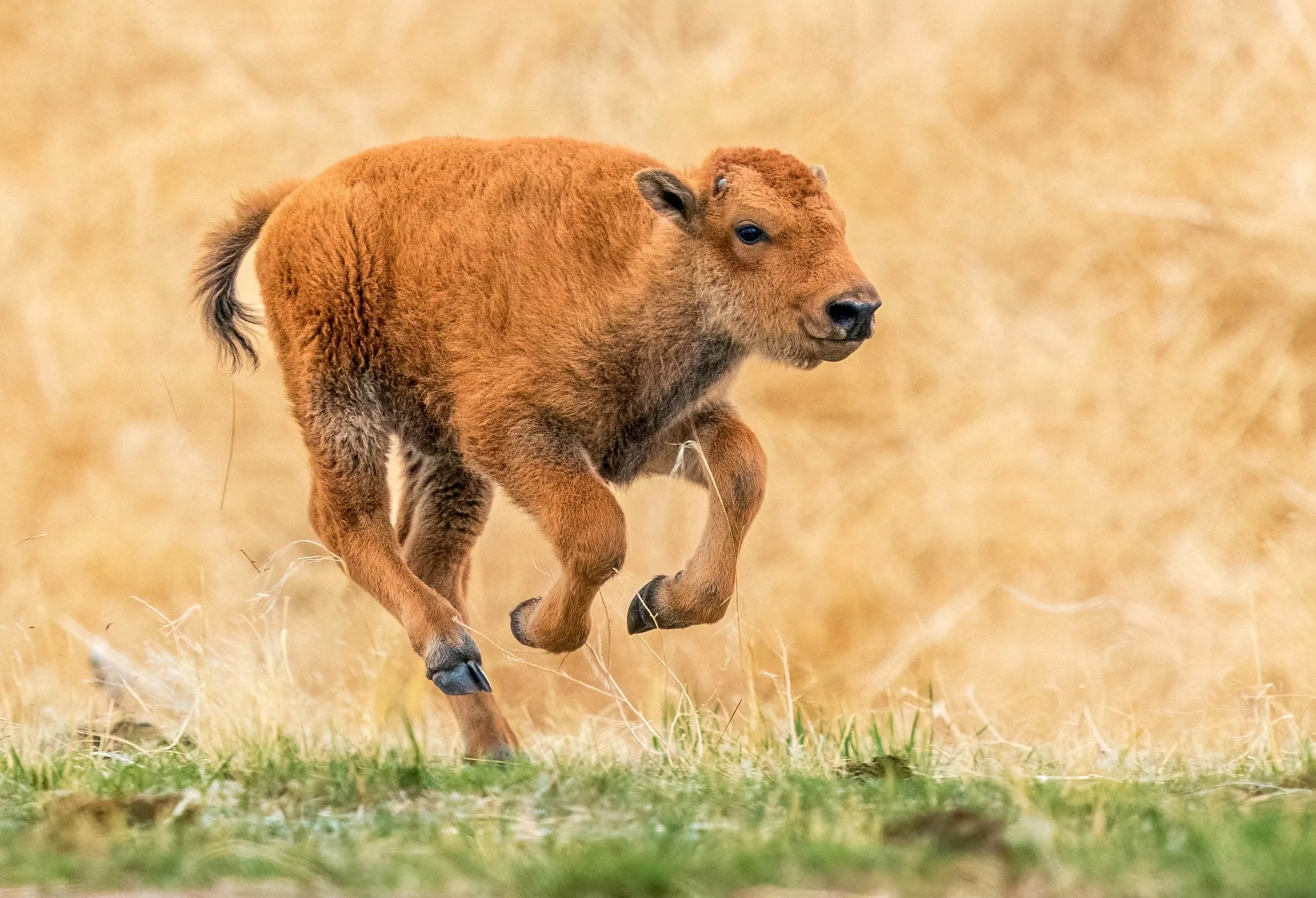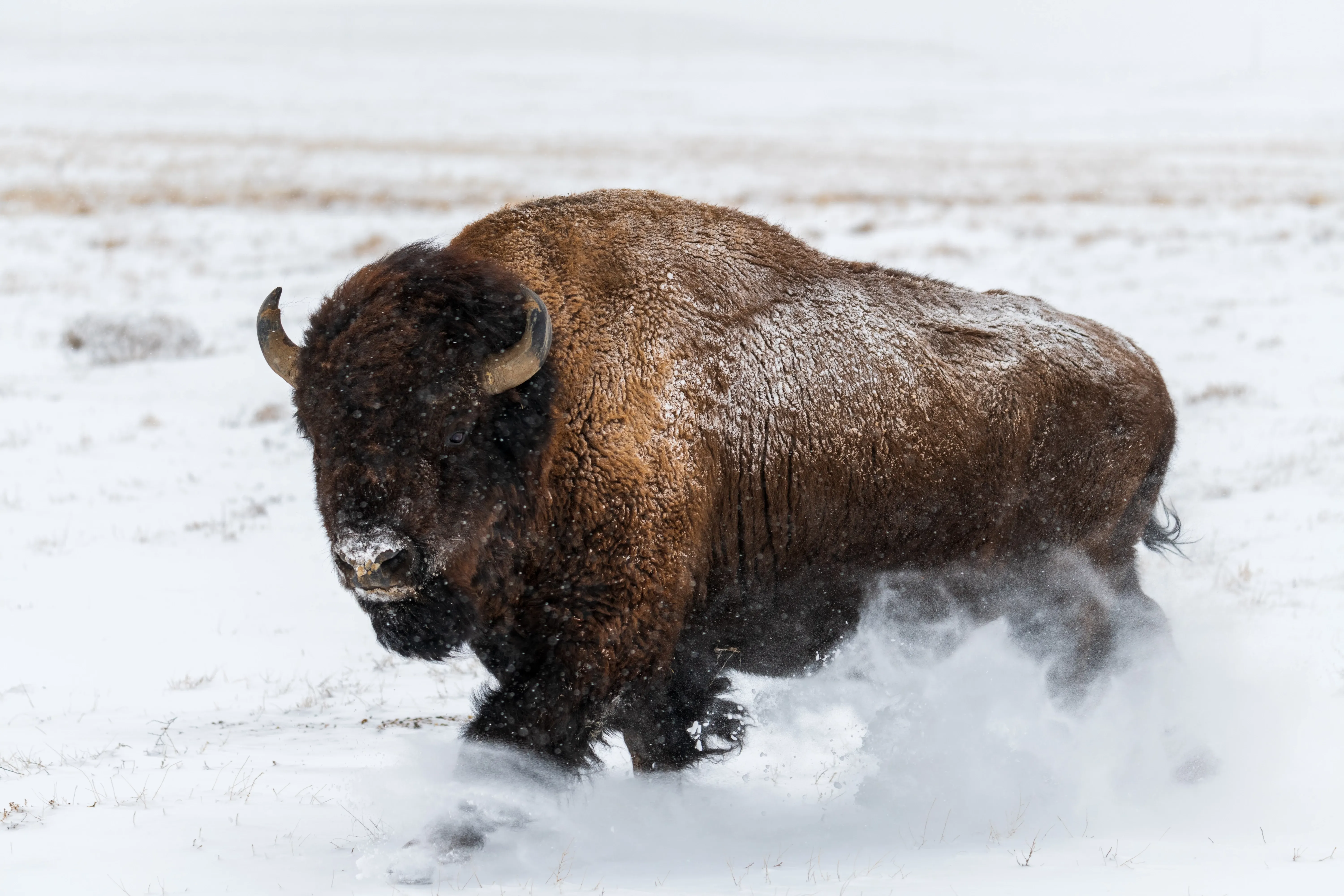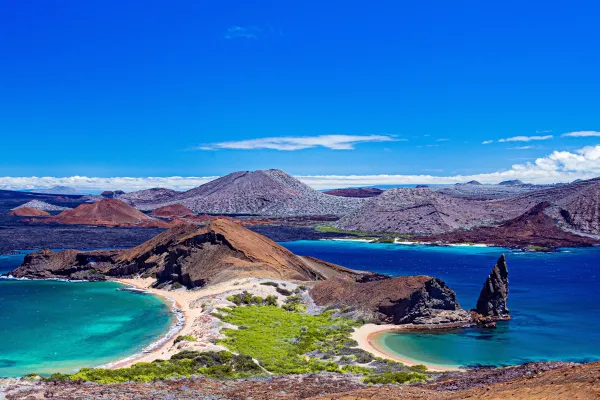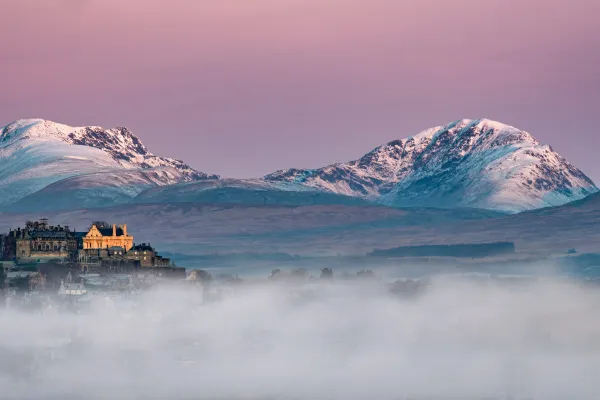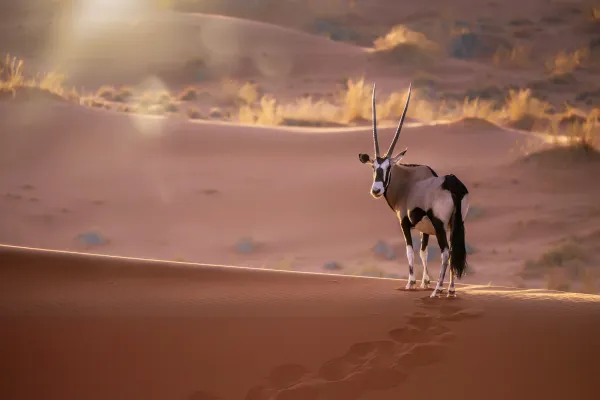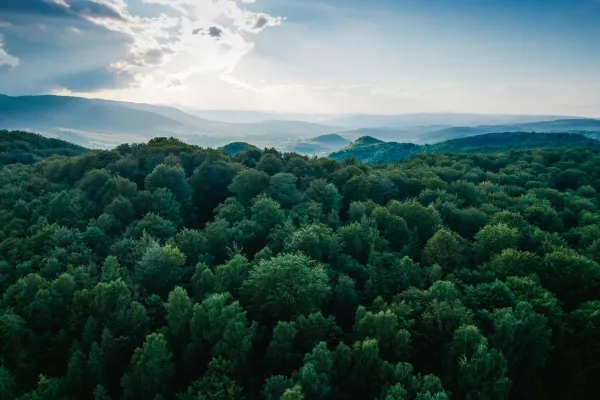Reinstating the American bison
North America’s iconic grazer – the American bison – was almost driven to extinction in the 1800s. Today, conservation programmes are underway to restore the keystone species to American prairies.
The bison’s ecological role
American bison, also known as buffalo (though not related to Asia’s water buffalo or Africa’s Cape buffalo), is North America’s largest land mammal. The mammals reach around 6 feet at the shoulder and weigh up to 2,000 pounds. Though notably smaller at around 1,000 pounds, the females can run just as fast (up to 40 miles per hour!) The species once roamed America’s Great Plains in their millions, from Canada right down to Mexico, and from the far east coast to the west. They were an iconic and significant part of the historic American landscape.
Thanks to their diet and behaviours, the giant mammals had an important ecological role in the prairies. American bison moved across the vast landscape in groups (led by the matriarchs) and selectively grazed on grasses and sedges on their travels. They avoided the majority of forbs and legumes, and so helped maintain a healthy balance in the floral ecosystem, trampling paths in the landscape as they went. Thanks to their great mass, bison provided a valuable protein source for carnivores and scavengers, too.

Their wallowing behaviour (which is considered a comfort behaviour with an added benefit of mitigating biting insects) also had an impact on the ecosystem. By rolling around and lying in areas covered with mud or water, American bison would create shallow depressions in the landscape. These flattened areas of prairie provided microhabitats that benefited life stages of various animals, including insects and amphibians. The behaviour also helped in the dispersal of some plant species, whose seeds would attach to the bison’s fur.
A brief history of bison and Native Americans
Indigenous Plains Indians followed herds of buffalo, which provided them with clothing, food, shelter, and virtually everything they needed to support their migratory lifestyle. Their tipis were made of bison skin; their beds and coats made of bison hides; and their knives and needles made of bison bones. Indigenous communities relied on buffalo and their heritage was closely intertwined with the species; buffalo were central to their ways of life and religions.
The bison’s decline
The American bison’s decline is a devastating story. As American settlers swept through the country, the US government developed an agenda to eliminate the American Indian culture, which didn’t fit with their own world views. Europeans believed in private land ownership, which contrasted with the nomadic ways of American Indians. Conflict broke out between the US settlers and Indigenous tribes, and the US government implemented a programme that encouraged the slaughter of American bison.
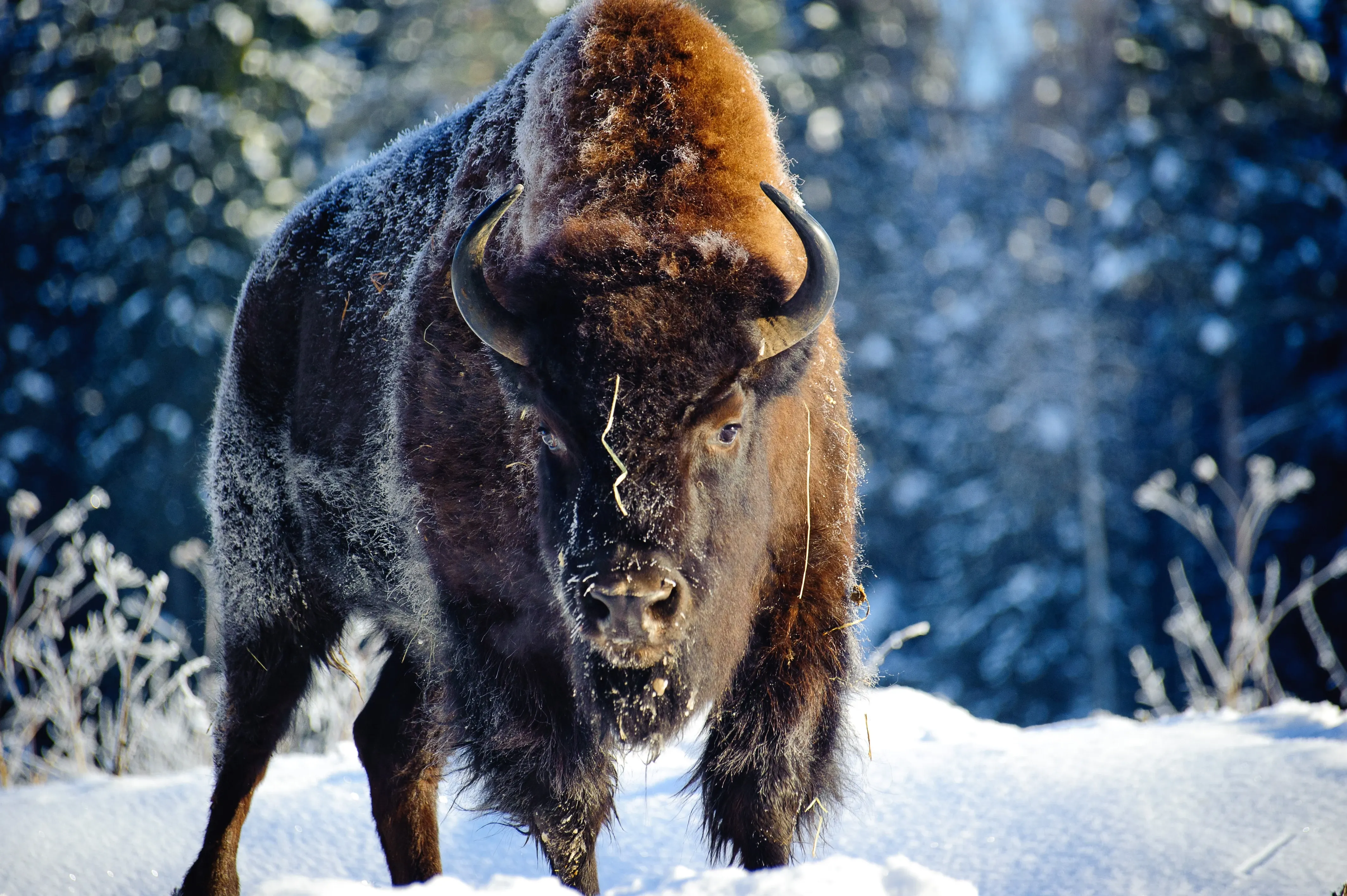
At its core, the campaign was designed to quash the Indigenous People who so relied on the buffalo for their very existence. That the land would become available for cattle grazing was a bonus, in the government’s eyes, since there was a growing demand for beef among the middle and upper classes in the post-war economic boom. Millions of bison were slaughtered, particularly in the 1870s, as part of this campaign to eradicate buffalo and make way for cattle. In the early 1900s, Indigenous communities were decimated and the American bison population dropped to under 1,000 wild individuals.
The conservation story
By the early 20th Century, the American bison was on the brink of extinction. People began to realise the value of American bison herds – both ecologically and culturally – and efforts have since been made to protect the continent’s iconic grazer. While they will probably never return to their historic population sizes and ranges (the native habitat has been built upon and segmented considerably over the last 100 years or so), conservation programmes are underway with the goal of restoring bison populations to a size at which they would fulfill their ecological roles in today’s prairie ecosystems.
When hunting ceased, people took the remaining bison onto private land and ranchers increased their numbers. Their goal: Reinstating the bison. Unfortunately, some ranchers bred bison with cattle; though this hybridisation wasn’t a successful approach, most bison that have since been used for breeding for conservation originated from these private herds, and so some cattle genes have transferred into the bison’s genetic material. American bison were bred in various private, isolated programmes in the early 1900s. A free-roaming population was also established in Yellowstone National Park.
By 1954, Yellowstone was home to some 1,300 bison and the rangers frequently culled bison to limit the population growth. Following a moratorium on culling in 1969, the Yellowstone population grew considerably and from 1991, hundreds of bison began to be removed again to curb the growth (some culled, some taken to other parks and animal collections). Today, Yellowstone is home to the biggest bison population on public land and as part of the region’s Bison Conservation and Transfer Program, the bison are quarantined to prevent the transfer of cattle disease brucellosis before being transferred to Native American tribes across the country.
Elsewhere, since natural space is now limited and bison need large swathes of grasslands, bison continue to be bred and managed in various preserves in the Great Plains. Many states still class American bison as livestock, and so they cannot legally roam free on public land. Today, the species is listed as Near Threatened by the IUCN and, while great progress has been made, preservation projects still have a long way to go to ensure a bright future for these incredible animals.
A blessing for the ecosystem
The tale of how American bison were driven to the brink of extinction is an important historical lesson with great cultural, as well as ecological, significance. Fortunately, the species escaped extinction and efforts are underway to restore populations. American bison restoration is an important part of ecosystem-level conservation projects in prairie lands. Because of their role in shaping ecosystems, bison are integral to maintaining a balance in prairie landscapes and many other species rely on them. Despite fragmented habitat remaining, restoration projects have big goals for American bison and there is much optimism around their future, and the future of prairie ecosystems.
Sources:
American Prairie
Nature.org
Yellowstone.org
Sign up for the newsletter
By clicking on “Subscribe now” I will subscribe to the Conscious Explorer newsletter with all the information about mindful travel. Information on the success measurement included in the consent, the use of the shipping service provider MailChimp, logging of the registration and your rights of revocation can be found in our privacy policy.


